|
The
purpose of this site is to share information about Imperial
German stuff and keep my own findings straight. I don't sell anything. Ok I take offers on postcards.
I am no expert. I am a collector. I give
several opinions a day on things. It is what it
is an opinion
and you get what you pay for. It is free. It might not be
right, and I have been wrong before and will be wrong again. But
it is a heck of a lot of fun. I have been told this site is like a gold
mine -- true -- you have to dig around a lot to find anything of value.
Stand To! Number 101 had the following review of The Great War Dawning. It also won a 2014 bronze medal for a work on history from the Military Writers Society of America.
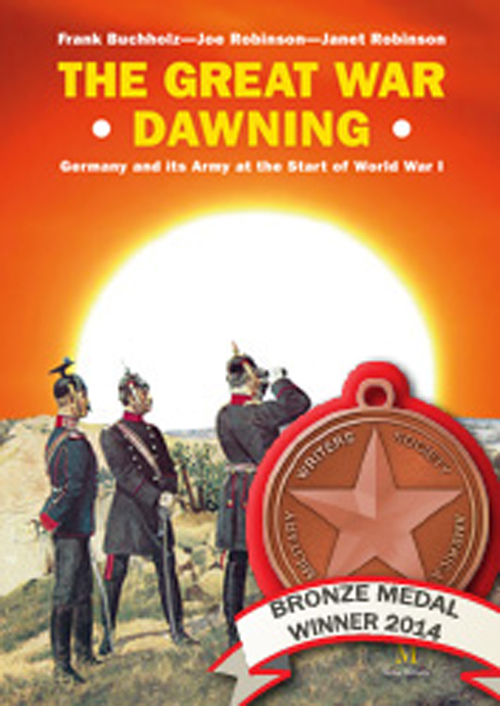
IMPORTANT? ABSOLUTELY
Dr. FRANK BUCHHOLZ, Col. (Ret.) Joe Robinson & Col. (Ret.) JANET ROBINSON
The Great War Dawning – Germany and its Army at the Start of World War 1
Verlag Militaria, Vienna, Austria, Euros 59.00, 532 pp., 80 ills, two unbound maps/charts.
It's a question a book reviewer is asked all the time; 'Do you actually read all the books you write about?' For once I admit - I am about to offer unalloyed praise for a book of which I have read little; indeed scarcely scratched its massive surface. My defence? Few, if any, military works have impressed me as much on first examination and none that I can recall, more. From its table of contents to the last page - 531 - The Great War Dawning is a big book. (Not least both libraries and collectors will need to store in one of those annoyingly unruly 'oversize book' shelves where the big books lurk. It is 0.5" high, 7.5" wide and 2 .25" thick. As well as it 500 plus pages of dense, but clear, type it offers numerous charts and seventy-five pages of well-reproduced photographs, maps and illustrations. It contains seventeen chapters, bolstered by seven impressive and valuable appendices - one with eight subsections - and ten closely-spaced pages, all of which bibliography comprise 166 pages.
This authors' tour de force is the definitive work of reference on the Germany's Army in 1914, and to call it impressive would be a huge understatement. It the most complete work on the subject in the English language, (and probably German). This is no mere vade mecum, but, effectively, a one volume library on the topic which also includes a valuable an analysis of the nation's social, political and economic structure before the war.
In addition to an evaluation of the German Army, from its structure and organisation to its officer corps and from its doctrines - infantry, army and artillery – to its material of logistical services, The Great War Dawning offers critical evaluation of the nation's plans for war, mobilisation and the 'cracks' in its edifice which appeared when Germany sought to execute its plans. Amongst other areas, the appendices evaluate the nation's Imperial Constitution, the structure and organisation of the Imperial Army in 1914, including that of Bavaria, Saxony and Wurttemberg, the rank and pay structure and the staffs and orders of battle of the German Armies after mobilization.
There is no question, the writing team's research has been massive, their authorship, and the book's editing, which has enjoyed considerable input from Jack Sheldon, is hugely impressive. No one privileged to receive a review copy of this valuable new work can fail to echo Sheldon's words in the book's introduction: 'This timely and authoritative book should be on the shelf of every serious student of the First World War. I commend it highly and hope that it will be widely read.'
The Great War Dawning will represent a magnificent addition to my own collection of reference books and one to which I will return with regularity. Despite its cost, it is impossible to praise the work too highly. It is the book of the year about the Great War in 2014 and I suspect for years to come for anyone with a serious interest in Germany and its army in the Great War.
David Filsell
This review, written by David Filsell, was first published in Stand To! the Journal of the Western Front Association, No. 101, September 2014.
Much cheaper from the publisher than Amazon.
http://www.militaria.at/Book.aspx?book=2277660&Language=en
The vast majority of the history questions I get are simply answered by giving a reference page number. Whether you are into ancestry or German history or World War I you need this book. Coming in at 4 1/2 pounds there is a lot of data, maps, and pictures in this one! Extremely handsome a present for anyone.
http://www.amazon.co.uk/Cavalry-Charge--Battle-Silver-Helmets-Halen-12/dp/1781551839/ref=sr_1_1?s=books&ie=UTF8&qid=1437045972&sr=1-1&keywords=cavalry+charges
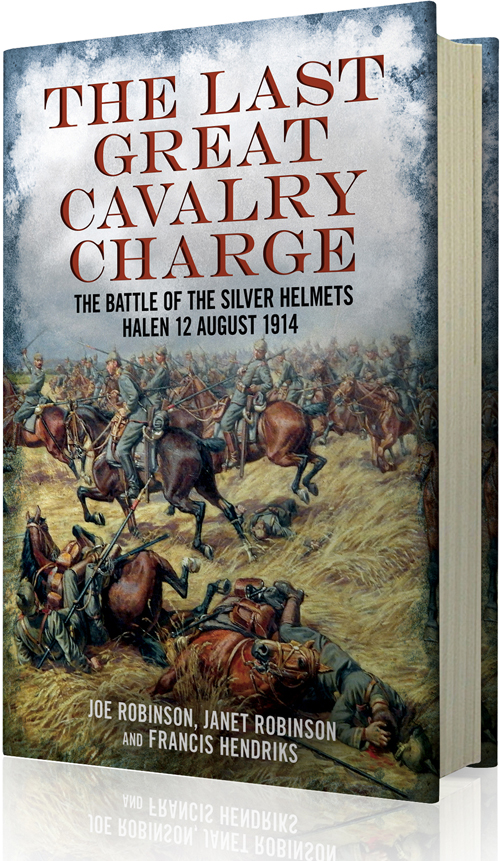
"As they proved in their magnificent reference work The Great War Dawning, published last year, American ex-soldiers Joe and Janet Robinson certainly know about the German Army of 1914. In The Last Great Cavalry Charge their expertise has been boosted by the contribution of former Belgian soldier and military historian Francis Hendricks. The result is fascinating. An account of a battle which took place days before the BEF went into the line at Mons and one which I venture few readers of Stand To! have even heard.
Whilst my own research on First Ypres had shown the lack of training of German cavalry in dismounted action, the authors truly underline incompetence of the nation's mounted arm. It had prepared for past wars. Despite Terence Zuber's views which loudly happily trumpet the magnificent quality of every almost aspect of the German army in 1914, its cavalry was inadequate. It was an arm of service still shackled to the anachronistic concept of the "knee to knee" grand action charge, of night-time bivouac. Deployed in inadequate strength, on the left of the advance into Belgium, it offered dated Napoleonic personnel sapping, horse killing, and exhibition of military inefficiency. I In truth it was little more than a parade ground trophy force whose problems of outmoded doctrine were magnified by strategic and tactical ineptitude and defective logistical support. Unlike British cavalry - trained and highly effective infantry once dismounted – the German was effective in the 20th century as would have been Ney's (whose thinking it broadly, and it seems willingly, embraced).
If not the very last cavalry charge, the fighting at Halen was almost certainly the most disastrous employment of cavalry on the field of battle of the Great War. Two brigades of Fourth Cavalry Division attempted no less than seven separate charges. In effect they were destroyed by dismounted Belgian cavalry and infantry which was itself firmly on the on the back foot. The episode underlined in stark terms that the Germans had ignored a new reality - modern weaponry made the élan of l'arme Blanche dead in its saddle. The tides of war had washed over the sand of mounted man and horse. Those on foot, with magazine rifles and the support of relatively limited quick firing artillery and machine guns now held all the aces against lance wielding men on horses and the officers who commanded them.
The Last Great Cavalry Charge is not merely the story of the battle but also a valuable dissection of the German cavalry arm in 1914. In doing so it deploys an impressive range of official records, supported by telling personal Belgian and French personal accounts 37 well chosen illustrations. That all said it must be added that a number of niggles indicate that the authors deserved better copy editing from their publisher. Mapping of the individual sections is adequate if necessarily broad brush. A large per map showing overall deployment and movement of forces and this area of Belgium, little know to Brits, would have been welcome. That all said this is a valuable addition to the early history of the Great War and a reflection of genuine 'donkeyism'."
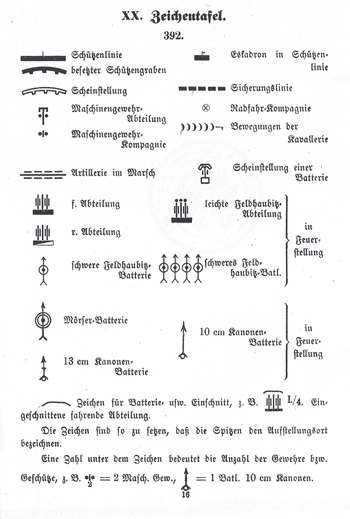
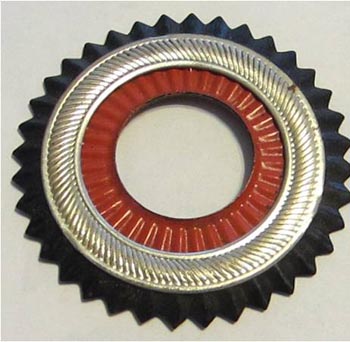
Two articles giving examples of helmet markings:


There is also an article on helmet makers and their marks:
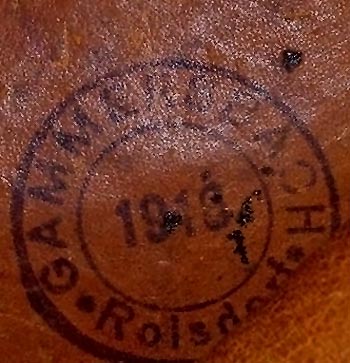
Our other books still in print.
http://www.authorhouse.com/BookStore/ItemDetail.aspx?bookid=60521
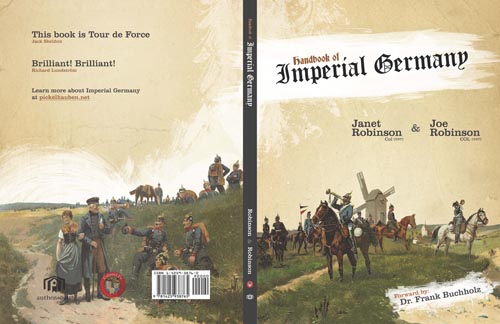
ww.authorhouse.com/Bookstore/ItemDetail.aspx?bookid=38699

"I am done... from all who think I have said to little
or too much, I beg pardon." St. Augustine -- The
City of God.
Last Updated Dec 16, 2016
Copyright Colonel J's LLC
2002-2016 all rights reserved |















